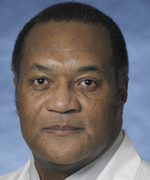Colleagues: Recently Tenured
LAURA ELNITSKI, Ph.D., NHGRI
Senior Investigator; Head, Genomic Functional Analysis Section

Training: Ruth L. Kirschstein National Research Service Award recipient, Department of Computer Science, Pennsylvania State UniversityEducation: Pennsylvania State University, University Park, Pa. (B.S. in molecular biology; Ph.D. in biochemistry and molecular biology)
Before coming to NIH: Research associate, Department of Computer Science, Pennsylvania State University
Came to NIH: In 2005
Selected professional activities: Member of Encyclopedia of DNA Elements (ENCODE) Rat, Mouse, Chicken, and Bovine Genome Sequencing Consortium
Outside interests: Long-distance competitive horseback riding; personal fitness; restoring a 1967 Ford Mustang
Research interests: As a molecular and computational biologist, I integrate bioinformatic and experimental approaches to study noncoding functional elements in vertebrate genomes. Functional sequences, which encode proteins, make up less than two percent of the human genome. The remaining 98 percent is made up of noncoding functional sequences of regulatory regions (containing promoters, enhancers, silencers, and RNA-splicing elements). It is essential to identify and characterize these noncoding sequences, especially because mutations in them can cause disease.
We apply computational approaches to zero in on sequences that are functionally important, predict detrimental mutations in regulatory sequences, and interpret the role of mutations identified in genome-wide association studies of disease. In one project, my group is investigating elusive functional elements in the human genome known as exonic splicing enhancers (ESEs). When DNA mutations fall within ESE-containing sequences, unnatural exon skipping can result. For example, exon skipping is caused by genetic mutations in the breast cancer BRCA1 gene and the cystic fibrosis CFTR gene. We have built probabilistic models and implemented them in a Web server known as Skippy to allow high-throughput screening for genomic sequence mutations that disrupt ESE sequences and normal RNA splicing. This tool is one of many that facilitate the interpretation of DNA sequence variants identified in whole-exome and whole-genome sequencing projects.
My group is also identifying, characterizing, and mapping a specific type of functional region—bidirectional promoters—that directs transcription in the human genome. Bidirectional promoters are often associated with DNA repair genes and genes that are implicated in somatic cancers. They may also play a role in the evolution of the human genome.
Finally, I have been involved in NHGRI's ENCODE (Encyclopedia of DNA Elements) project since its inception. The project is producing a comprehensive catalog of functional elements in the human genome. My group participated by developing a novel experimental system to validate elements that silence gene expression.
CAROLINE FOX, M.D., M.P.H, NHLBI, FRAMINGHAM
Senior Investigator, Laboratory for Metabolic and Population Health, Framingham Heart Study, Framingham, Mass.

Education: University of Michigan, Ann Arbor (B.A. in English and M.P.H. in epidemiology); Perelman School of Medicine at the University of Pennsylvania, Philadelphia (M.D.)
Training: Residency in internal medicine and fellowship in endocrinology at Brigham and Women’s Hospital (Boston)
Came to NIH: In 2002
Selected professional activities: Associate editor, Circulation; associate clinical professor of medicine, Harvard Medical School (Boston); an appointment in Brigham and Women’s Hospital Department of Endocrinology (Boston)
Outside interests: Enjoys outdoor activities; reading; baking; playing with her children
Research interests: My research interests revolve around epidemiologic and genetic aspects of chronic kidney disease (CKD) and metabolic factors associated with heart disease, including obesity and diabetes. I use the traditional tools of epidemiology and population science as well as additional high-throughput biomarkers, genetics and genomics, and imaging to better understand the risk factors and outcomes related to metabolism and heart disease. I run a large consortium, CKDGen, which consists of more than 50 studies and is dedicated to uncovering genes for renal function. Together, we have uncovered nearly 50 genetic loci for kidney function and related traits.
I also convene a consortium dedicated to uncovering genes for ectopic fat depots. We have shown that there are unique genetic loci for ectopic fat (fat that accumulates in the abdominal region, liver, and heart and is associated with insulin resistance and type 2 diabetes), above and beyond associations with generalized adiposity. The genetic studies are a vehicle for translational discovery and help inform my nongenetics work.
I am dedicated to training the next generation of physician-scientists and actively mentor several individuals in my laboratory.
GARY H. GIBBONS, M.D., NIMHD, NHLBI
Senior investigator, NIMHD; Director of NHLBI

Education: Princeton University, Princeton, N.J. (B.S. in biology); Harvard Medical School, Boston (M.D.)
Training: Residency and fellowship in cardiology at the Harvard-affiliated Brigham and Women’s Hospital (Boston)
Before coming to NIH: Founding director of the Cardiovascular Research Institute, chairperson of the Department of Physiology, and professor of physiology and medicine at the Morehouse School of Medicine (Atlanta)
Came to NIH: August 2012
Selected professional activities: Elected to the Institute of Medicine of the National Academy of Sciences; selected as a Pew Biomedical Scholar by the Pew Charitable Trusts
Outside interests: Spending time with the family; listening to music, especially jazz; reading; playing golf
Research interests: I am studying racial health disparities in cardiovascular disease. Health disparities involve a complex, multidimensional interplay of factors and systems that interface at the level of the individual, family, community, and society. Before coming to NIH, I was one of the first investigators to receive funding to study changes in the epigenome in cardiovascular biology. My group observed that the vascular epigenome undergoes dynamic changes in the context of vascular injury and hypertension. At NIH, I will be pursuing a clinical research study that is examining the effect of the DASH diet (Dietary Approaches to Stop Hypertension diet, which is rich in fruit, vegetables, and whole grain) on blood pressure and the epigenome of the vasculature in African-Americans with hypertension. We are also doing a translational research project that will test the hypothesis that dynamic changes in the epigenome are mediated by the effects of diet and drugs such as angiotensin II receptor blockers that reduce blood pressure and cardiovascular complications such as stroke.
EDDIE REED, M.D., NIMHD (died May 28, 2014)
Clinical Director, NIMHD Intramural Research Program

Education: Philander Smith College, Little Rock, Ark. (B.S. in biology/pre-med); Yale University, New Haven, Conn. (M.D.)
Training: Residency in internal medicine at Stanford University (Palo Alto, Calif.); fellowship at NCI
First came to NIH: In 1981 for training; stayed through early 2001 (became a tenured scientist in NCI)
Other work at NIH: In 1991, became a tenured scientist; in 1993, became Chief of NCI’s Clinical Pharmacology Branch. Concurrently, became chief of NCI’s Ovarian Cancer and Metastatic Prostate Cancer Clinics. Recruited to West Virginia University in 2001
After leaving NIH in early 2001: Director of the Mary Babb Randolph Cancer Center at West Virginia University (Morgantown, W. Va.); director of the Division of Cancer Prevention and Control at CDC, Atlanta; professor of oncologic sciences and Abraham Distinguished Investigator, University of South Alabama’s Mitchell Cancer Institute (Mobile, Ala.)
Returned to NIH: In December 2012
Selected professional activities: Translational studies on DNA damage and repair; clinical trials in metastatic prostate cancer
Research interests: My current lab-based work is focused on DNA damage and repair as it relates to anticancer chemotherapy. We recently published on the molecular connection between chemotherapy-related DNA repair and the Hedgehog pathway. The Hedgehog pathway is critically important in the development of drug resistance in cancer cells. We showed that when the Hedgehog pathway is blocked in cancer cells at the molecular level, these cells become much more sensitive to anticancer chemotherapy.
In my clinical trials at the University of South Alabama, I conducted studies in ovarian cancer and advanced-stage prostate cancer. I plan to continue my focus on advanced-stage prostate cancer at the NIH in collaboration with William Dahut (NCI).
As clinical director, I will oversee a combination of studies including outpatient, inpatient, epidemiological, clinical, and laboratory-based investigations. I will help build a multi- and interdisciplinary research program geared to translating basic research into clinical trials and interventions. In addition I will lead the NIMHD effort in enhancing the recruitment and retention of minorities and other underserved populations in clinical trials.
SHARON A. SAVAGE, M.D., NCI-DCEG
Senior Investigator, Division of Cancer Epidemiology and Genetics, Clinical Genetics Branch

Education: Worcester Polytechnic Institute, Worcester, Mass. (B.S. in biochemistry); University of Vermont College of Medicine, Burlington, Vt. (M.D.)
Training: Residency in pediatrics at Children’s National Medical Center (Washington, D.C.); fellowship in pediatric hematology/oncology at the NCI Pediatric Oncology Branch and Johns Hopkins University (Baltimore)
Came to NIH: In 2000 for training; became tenure-track investigator in 2006
Selected professional activities: NCI liaison to the Council on Environmental Health of the American Academy of Pediatrics; member of the Medical Advisory Board for Dyskeratosis Congenita Outreach
Outside interests: Enjoys family-related activities; traveling; playing tennis with her son; horseback riding with her daughter; dog agility training
Research interests: My research is focused on the genetic and molecular epidemiology of telomere biology, pediatric cancer etiology, and inherited cancer predisposition syndromes. Telomeres are specialized nucleoprotein structures at the ends of chromosomes that are essential for chromosomal stability. We are studying telomere length as a biomarker and have focused patients with dyskeratosis congenita (DC), a telomere biology disorder. Patients with DC are at high risk of bone-marrow failure, cancer, leukemia, and other medical problems. Our work established telomere length as the diagnostic test for DC. Using clinical, genomic, and molecular approaches, we identified three of the genes responsible for this disorder.
A major goal of my research program is to advance the understanding of genetic contributions to pediatric cancer etiology. Our studies focus on osteosarcoma, the most common primary malignant bone tumor, which typically occurs during the adolescent growth spurt. We have discovered novel genetic variants that are associated with this cancer type. We plan to follow up on these findings through fine-mapping studies and other genetic analyses.
We are also trying to expand the understanding of the underlying biology of inherited cancer predisposition syndromes in order to improve clinical management. We have developed a new clinical, genetic, and epidemiologic study of Li-Fraumeni syndrome (LFS), a hereditary cancer-susceptibility syndrome associated with a wide range of cancer types that occur at younger-than-expected ages. We have helped establish partnerships—an international research consortium of LFS families and a LFS family support group—that have enabled us to design studies to define the cumulative cancer risk in individuals with LFS, as well as evaluate the psychological and social effects of LFS on the entire family.
JYOTI MISRA SEN, M.SC., PH.D., NIA
Senior Investigator, Immune Cells and Inflammation Section

Training: David Abraham Fellow at Dana Farber Cancer Institute (Boston)Education: Maharaja Sayajirao University, Baroda, India (B.Sc. in chemistry, physics, and zoology); Indian Institute of Technology, Kanpur, India (M.Sc. in chemistry); Columbia University, New York (Ph.D. in biological sciences)
Before coming to NIH: Claudia Adams Barr Investigator with faculty appointments at Dana Farber Cancer Institute and Harvard Medical School (Boston)
Came to NIH: In 2003
Selected professional activities: Adjunct faculty at the School of Medicine Immunology Graduate Program, Johns Hopkins University (Baltimore)
Outside interests: Enjoys music and art; reading; cooking
Research interests: I am interested in studying the mechanisms that mediate the development and function of immune cells and control age-associated systemic inflammation. I am exploring the molecular basis for immune cell development and the age-related decline in the immune system. The renewal of the mammalian immune system from bone marrow–derived hematopoietic stem cells throughout life is orchestrated by events that are robust in young individuals but decline with age. As a result, older people may have poor outcomes for vaccinations and medical interventions and experience chronic systemic inflammation.
My laboratory’s recent work has focused on the transcription factor T-cell factor–1 (TCF-1) and its co-factors beta-catenin and Groucho. We have demonstrated that TCF-1 and beta-catenin have critical roles in T-cell development and selection in the thymus. In addition to confirming the well-accepted role of TCF-1 downstream of the Wnt signaling pathway, our studies demonstrate that the T-cell receptor (TCR) and pre-TCR activate TCF-1 and beta-catenin function in developing thymocytes and T cells. Interestingly, the Wnt signaling pathway also regulates thymic epithelial and thymocyte cross talk that controls age-associated shrinking of the thymus. These observations have implications for restoring thymic function in the elderly.
In addition, our studies show that TCF-1 and beta-catenin contribute to immune function by controlling T helper cell differentiation upon encounter with pathogens. TCF-1 and beta-catenin promote differentiation of T helper type 2 cells, which are involved in allergy and asthma, while inhibiting inflammatory T helper responses. These observations will aid our ability to modulate immune responses by pharmacologic manipulation of TCF-1 and beta-catenin expression and function.
We anticipate that our work to understand the mechanisms by which the immune system protects against invading pathogens without triggering autoimmune responses will lead to insights that may help improve the quality of life of the elderly.
AFONSO C. SILVA, Ph.D., NINDS
Senior Investigator; Head, Cerebral Microcirculation Section

Education: Universidade Federal de Pernambuco, Recife, Brazil (B.S. and M.S. in electrical engineering); Carnegie Mellon University, Pittsburgh (Ph.D. in biomedical engineering)
Training: Postdoctoral training in temporal and spatial characteristics of functional brain hemodynamics at the University of Minnesota’s Center for Magnetic Resonance Research (Minneapolis)
Came to NIH: In 1999 as a staff scientist; in 2004, became a tenure-track investigator and head of the Cerebral Microcirculation Unit
Selected professional activities: Member of the editorial boards for Journal of Cerebral Blood Flow and Metabolism, Neuroimage, and NMR in Biomedicine; member of the International Society for Cerebral Blood Flow and Metabolism, the International Society for Magnetic Resonance in Medicine, and the Society for Neuroscience
Outside interests: Swimming; fitness; running; raising tropical fish
Research interests: We are trying to understand the mechanisms of neurovascular coupling, which is the tight relationship between neuronal activity and the regulation of cerebral blood flow (CBF) in the brain. These mechanisms are crucial to maintaining the homeostasis of the delicate cellular environment of the brain. Their disruption causes brain dysfunction and disease. We are exploring what drives the changes in CBF in response to neural activity; the primary signaling and molecular pathways that translate a change in brain activity into a vascular response; how the cerebral microvasculature organizes to optimally support focal changes in neural activity; and how alterations in neurovascular coupling lead to brain dysfunction.
To understand how CBF is regulated during normal brain activity and in pathological brain states (for example, hypertension and stroke), my laboratory is using rodents and small nonhuman primates as models of localized functional brain activation in combination with neuroimaging techniques such as functional magnetic resonance imaging and two-photon optical microscopy. More information about our research can be found in our laboratory’s Web page at http://www.lfmi.ninds.nih.gov/cmu-main.html.
This page was last updated on Friday, April 29, 2022
